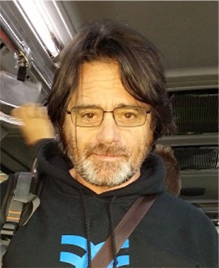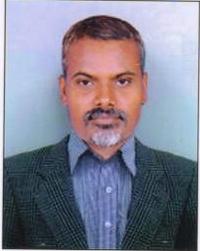Day 1 :
Keynote Forum
S Majid Hassanizadeh
Utrecht University, The Netherlands
Keynote: Grain-scale modelling of highly swelling granular materials
Time : 10:00-10:50

Biography:
Abstract:
Keynote Forum
Francesco Vegliò
University of L’Aquila, Italy
Keynote: Exploitation of mining wastes by physical technologies coupled with hydrometallurgical operations to develop sustainable processes
Time : 11:10-12:00

Biography:
Francesco Veglio is a Professor of “Theory and Development of Chemical Processes at University of L'Aquila. He has experience in the preparation and management of research projects, activity of R&D on the valorisation of raw materials and industrial wastes, chemical and biotechnological processes, environmental technologies and bio-hydrometallurgy. He is the President of Teaching Activities in Industrial Engineering in University of L’Aquila, member of the scientific committee of the “Foundation of University of L’Aquila” (2009-2011) and the Member of the International Academy of Ecology and Protection Sciences (IAELPS) number – 04706 – Russia.
Abstract:
The metals and industrial minerals contained in the tailings of mining and quarrying activities usually produce dangerous Acid Mining Drainage (AMD) generating several serious environmental impacts on the water ecosystem coupled with air pollution effects (dusts contamination due to the wind). The present work is focused to several cases under study in some geological place mainly present in Romania (i.e. Balan area) and other countries in the world. The objective of the experimental activities was to develop some general methodological approach to develop innovative and sustainable technologies for the treatment and exploitation of these kinds of mining tailings by using a combination of physical, biological and chemical processes. This general approach demonstrated the possibility to separate by physical processes (i.e. wifely table) several kind of minerals such as quartz, chamesite and gold-containing pyrite. In other cases gold is present in oxidized fraction of these kind of tailing. In these last cases thiourea or thiosulfate leaching processes could be a valid alternative to the conventional use of cyanide with several advantages on the environmental impact and on the sustainability of the developed processes: treatment of contaminated sites, reducing of water and air pollution, improving the economy of the interested regions with positive social impacts. Moreover, it should be considered that a conventional process very often shows operating limits in the case of auriferous refractory minerals. An important characteristic of thiourea and thiosulfate leaching process it is the best selectivity towards gold; they does not attack the majority of the gangue mineral constituents and more than 75-80% of gold recovery can be obtained under no severe process conditions with positive fall-out on CAPEX and OPEX of the industrial plants. Where chemical pre-treatment are necessary hydrometallurgical operation can be easily applied with the same chemical reagents (i.e. removal of copper before thiourea leaching). This study would like to present some practical case of exploitation of mineral tailings indicating some guidelines to approach the decontamination of these kind of very wide dumps or landfill producing at the same time economical values with social and environmental benefits.
Keynote Forum
Rahul Verma
Botswana International University, Botswana
Keynote: Kinematic analysis of elephant rock section, NH-44A, Aizawl, Mizoram, India

Biography:
Rahul Verma has an overall teaching and research experience of more than 26 years. He has worked in Himalayan Terrain for his Master’s Dissertation in Structural Geology. He has a Doctoral Degree in Petrology and Geochemistry. His current focus is in structure, tectonics and slope stability. He has completed two projects sponsored by government of India in the field of landslide causative factors and hazard zonation. Currently he is handling a BIUST sponsored project on slope stability in Mupane Gold Mine, Botswana. He has published 36 papers/chapters and has authored two books on geology. Currently, he is affiliated to the Department of Mining and Geological Engineering in Botswana International University of Science and Technology.
Abstract:
Mizoram, the north eastern state of India is a vast terrain of sedimentary rocks deposited in the Mizoram Geosyncline. The lithology consists of sandstones, siltstone and shale’s in varying combination. These rocks are intensely jointed and sheared under the influence of the tectonic stress created by the Indo-Myanmar plate collision in their vicinity. The lithological and geotectonic setup of the region in association with heavy rainfall and high seismic activities triggers the landslides. The frequency of landslides induces during the monsoon and post monsoon period. The present study is a comprehensive analysis of the most vulnerable road section along the National Highway-44A (NH-44A) that connects the state capital Aizawl to the lone airport of the state at Lengpui. The study was carried out along the most dangerous section that is locally known as elephant rock section because of the presence of very big massive sandstone exposures resting upon the shale, siltstone intercalation. These rocks are heavily jointed and have once slide few years ago, that led to the collapse of the road. It was so massive that the road was closed for more than 2 years. The study section, precisely 1878 meters long, extends between the coordinates N 230 49’01.6” E 920 37’ 37.8” to N 230 49’10.8” E 920 37’48.8”. The slope height varies between 25 to 70 feet. The beds have varying dips from 10° to 45°. Various joints are reported with the joint angle varying from as low as 35° to as high as 88°. The joint volume varies from 1 to 24. The joint spacing varies from<1 inch to 4 inch. The surface is found rough to very rough and weathered slightly/moderately. And the surface is excavated naturally. The data generated through field measurements done manually, is fed in the DIPS 7.0. The DIPS analysis reveals four slope segments viz.: (1) 70°/90°, (2) 68°/168°, (3) 72°/220° and (4) 70°/45° and the respective discontinuity types joints, bedding plane, bedding plane and joints. The analyses reveal that the first segment (70°/90°) has no possibility of failure, the second segment (68°/168°) has a possibility of wedge failure, the third segment (72°/220°) has a possibility of both planer and direct topple type of failure and the fourth segment (70°/45°) again has the possibility of both planer and direct topple type of failure.
Keynote Forum
T Benarji Patrudu
GITAM University, India
Keynote: Physico-Chemical nurture of soil texture procedure for identification of Indian tropical Soils
Time : 15:25-15:50

Biography:
T Benarji Patrudu has completed his PhD from Andhra University, Visakhapatnam. He is currently working as an Associate Professor in the Department Of Chemistry, Gandhi Institute of Technology and Management University, Hyderabad, India. His area of research includes analytical methods for bio, environmental and pharmaceutical samples. He has published 40 research articles in reputed international and national journals and has published 18 papers in national conferences.
Abstract:
A simple, accurate and convenient analytical method has been developed for the determination of different soil samples. Soils were collected from different locations like Rudraram, Koulampet, Cheriyal, Lakdaram and Pashamylaram belonging to Medak district, Telangana, India. Soil samples were taken from a depth below the surface 20 cm. The selected sampling sites were not treated with crop protection products formative last two years and no organic fertilizers applied from last two years. Soils dried for about half an hour at room temperature before determination of all physico-chemical parameters. Air dried soil samples were sieved through a 2 mm sieve and used for determination of pH, bulk density and soil texture. To a 1 liter beaker, 20 g of air dried soil sample was transferred and 50 ml of 30% w/v H2O2 was added and mixed well. The reaction was allowed to proceed for 5 minutes and then it was placed in a hot water bath at 70 oC for about 20 minutes. The beaker was covered with a watch glass. Stirring was continued to avoid frothing over. Further 20 ml of H2O2 was added and was placed in the water bath at 70 oC for about 20 minutes. The contents were diluted to about 150 ml of distilled water and were brought to boil on a water bath at 70 °C. H2O2 treatment is to oxidize the organic matter in the soil, estimation of clay, silt and sand. Based on the characterization, the soils were distinguished into loamy sand, sandy loam, clay and sandy clay. The details of collection location and type of soils as follows: (1) Rudraram-contains loamy sand soil, (2) Koulampet-contains loamy sand soil, (3) Cheriyal-contains sandy loam soil, (4) Lakdaram-contains sandy clay soil and (5) Pashamylaram-contains clay soil.
Keynote Forum
Pedram Rafiee
Dana Energy Company, Iran
Keynote: The probability of a large Earthquake in Tehran, fact or faked
Time : 16:30-16:55

Biography:
Pedram Rafiee has his PhD in Geology/Biostratigraphy. His major field is related to petroleum geology, well site geology, biostratigraphy and sedimentology. He is currently working at Dana Energy Company as Chief Geologist and has worked at this company for approximately 7 years.
Abstract:
Due to being on the Alpine-Himalayan orogeny belt, Iran has always been affected by the changing factors of the Earth’s crust and is exposed to the most orogenic activities and earthquakes. In 2017, The Iranian Seismological Center (IRSC) recorded more than 16,000 earthquakes of which 235 earthquakes have been registered for more than 4.0 on the Richter scale. On December 20, 2017, a large earthquake of magnitude 5.2 has struck Iran’s capital Tehran just five weeks after a major earthquake in Kermanshah province that killed at least 600 people. The Iranian Seismological Center assessed the hypocenter near Malard (Tehran province) at a depth of 15 km. The fault caused this incident called Mahdasht fault by a strike-slip mechanism, which is located along the west of the north Tehran fault and the east of Eshtehard and Ipak faults. Subsequently, earthquakes of magnitude 4.6, 3.6 and 4.3 occurred in Firuzkuh, Pakdasht and Eyvanki respectively, which could indicate the seismicity of east and south east of Tehran. After this time, earthquakes of magnitude 2 to 3.5 were recorded in Eshtehard and south of Karaj. These evidences can indicate the continued seismicity and the seriousness of the risk and risk of an earthquake in Tehran metropolis. The south fault of Tehran, or the ray fault, which has a magnitude of 7 to 7.6, Mosha-Fasham fault with a magnitude of 7 and north Tehran fault are among the most dangerous faults in Tehran though they have not released energy for many years. The data show that in a circle in the center of Tehran with a radius of 100 kilometers, an earthquake of magnitude 7 occurs in every 158 years. The largest earthquake in Tehran occurred during the past 188 years and was 7.2 magnitudes, so it seems the earth’s energy is gathering in faults and the next earthquake is likely to be more intense.
